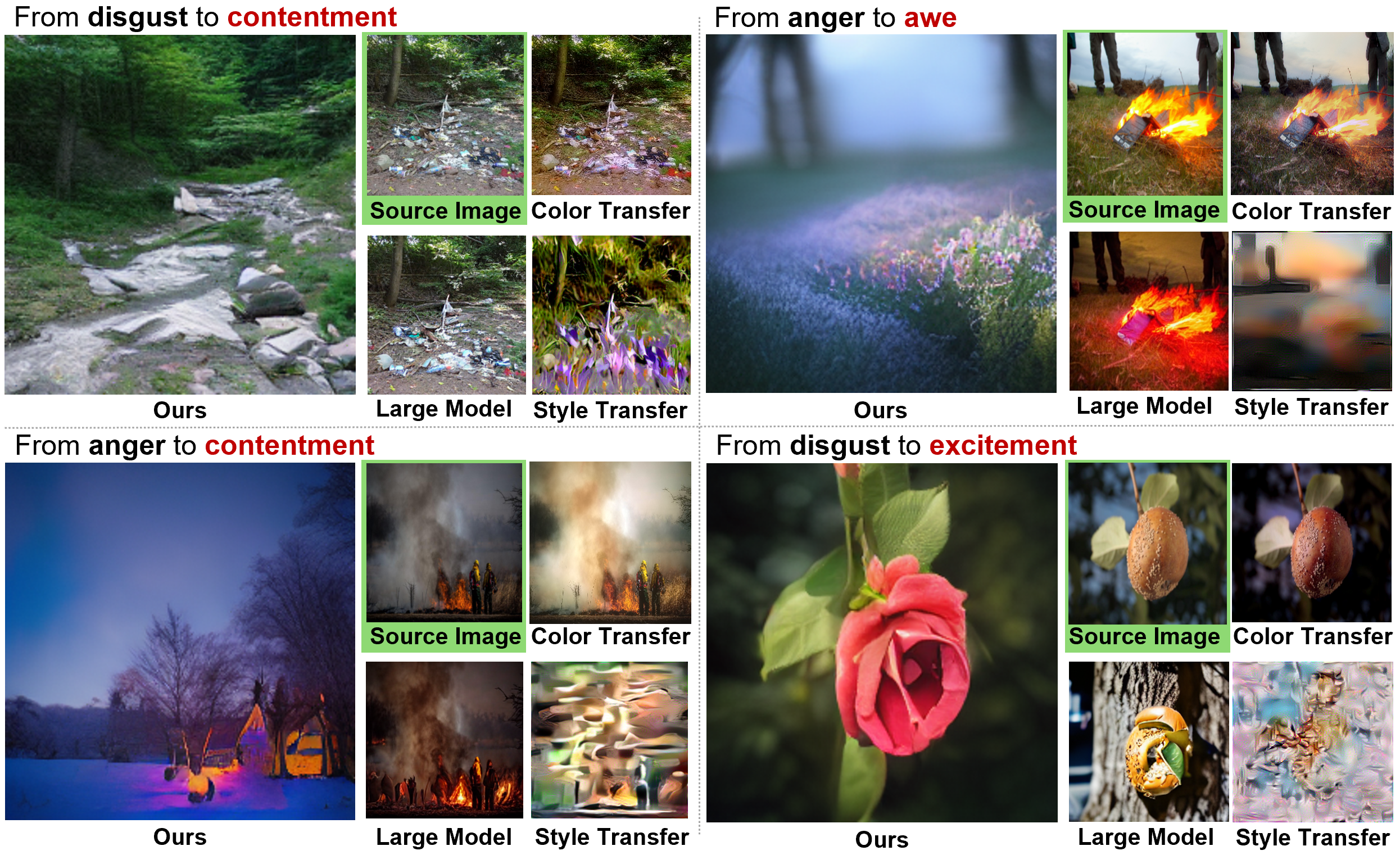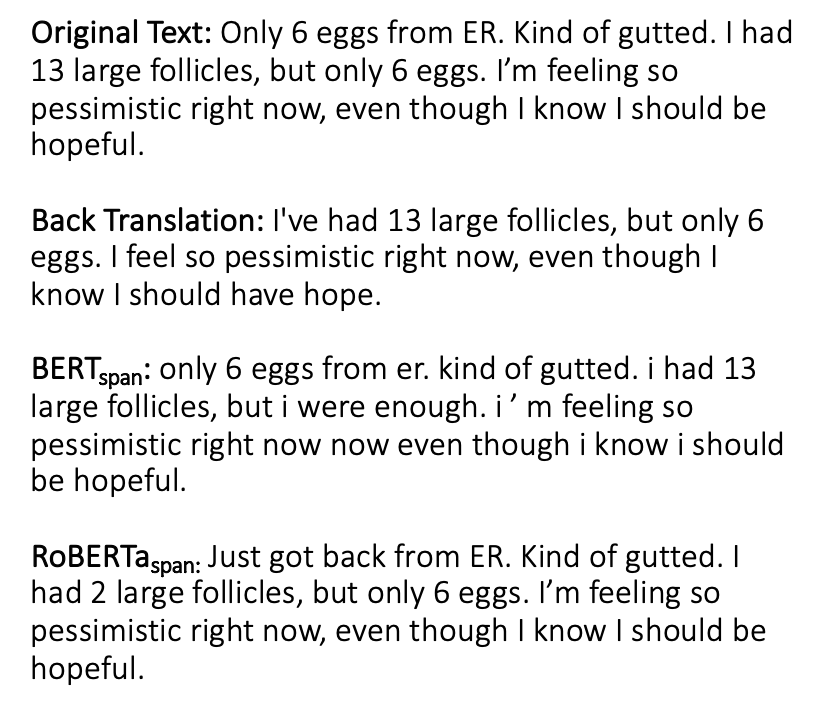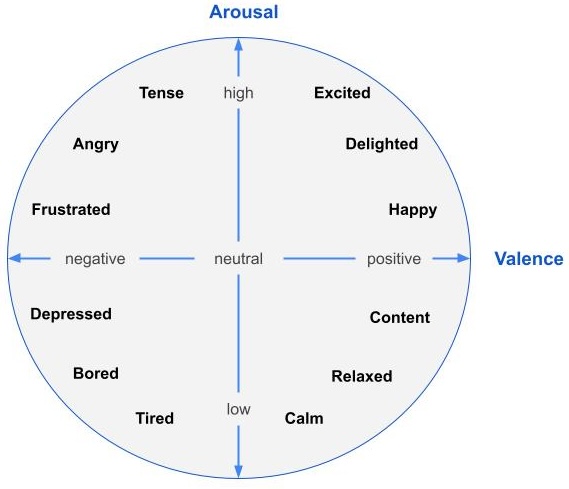Evaluation and Comparison of Emotionally Evocative Image Augmentation Methods
2406.16187

0
0

Abstract
Experiments in affective computing are based on stimulus datasets that, in the process of standardization, receive metadata describing which emotions each stimulus evokes. In this paper, we explore an approach to creating stimulus datasets for affective computing using generative adversarial networks (GANs). Traditional dataset preparation methods are costly and time consuming, prompting our investigation of alternatives. We conducted experiments with various GAN architectures, including Deep Convolutional GAN, Conditional GAN, Auxiliary Classifier GAN, Progressive Augmentation GAN, and Wasserstein GAN, alongside data augmentation and transfer learning techniques. Our findings highlight promising advances in the generation of emotionally evocative synthetic images, suggesting significant potential for future research and improvements in this domain.
Create account to get full access
Overview
- This paper evaluates and compares different methods for augmenting images to evoke emotional responses.
- The authors explore the use of generative models, such as Generative Adversarial Networks (GANs), to create emotionally-charged image variations.
- They assess the effectiveness of these augmentation techniques for improving emotion classification in machine learning models, particularly in low-resource scenarios.
Plain English Explanation
The researchers in this study wanted to find better ways to generate images that can evoke specific emotions in people. They tested out different machine learning techniques, like Generative Adversarial Networks, to create new images that are designed to make people feel happy, sad, angry, or other emotions.
The goal was to see if these "emotionally-evocative" images could be used to improve the performance of AI systems that are trying to classify or recognize human emotions, especially when there is not a lot of training data available. For example, if an AI model is trying to identify happy faces, adding in some generated happy images might help the model learn better, even if there are not many real happy face photos to train on.
The researchers ran experiments to evaluate how well these augmented images worked compared to just using the original training photos. They looked at factors like how much the generated images were able to actually evoke the target emotions, and how much they improved the emotion classification accuracy of the AI models.
Technical Explanation
The paper explores the use of generative models, specifically Generative Adversarial Networks (GANs), to create emotionally-evocative image variations that can be used for data augmentation. The authors assess the effectiveness of these augmentation techniques for improving emotion classification performance, especially in low-resource scenarios where labeled training data is limited.
The researchers experiment with several GAN-based approaches, including GANMut and other custom models, to generate images that aim to elicit specific emotional responses. They evaluate the emotional impact of the generated images using both subjective human ratings and objective measures of emotional valence and arousal.
The augmented training datasets, combining the original images with the generated emotionally-evocative variants, are then used to train emotion classification models. The authors compare the performance of these augmented models to models trained on the original data alone, as well as to other data augmentation techniques like SMOTE. The results demonstrate the potential benefits of using emotionally-charged image augmentation, particularly in low-data scenarios, to enhance the prediction of emotional responses on social media.
Critical Analysis
The paper provides a thorough evaluation of the proposed emotion-based image augmentation methods, including detailed experiments and analyses. However, the authors acknowledge some limitations of their work, such as the reliance on self-reported emotional responses and the potential challenges in generalizing the findings to real-world applications.
One area for further research could be exploring more objective measures of emotional impact, such as physiological or neurological responses, to better understand the true emotional evocation of the generated images. Additionally, the authors note that the effectiveness of the augmentation techniques may vary depending on the specific emotion classification task and dataset.
It would also be valuable to investigate the long-term stability and robustness of the augmented models, as well as potential biases or unintended consequences that may arise from the use of emotionally-charged synthetic data. Maintaining ethical considerations around the use of such techniques is crucial as the field of affective computing continues to evolve.
Conclusion
This study presents a promising approach for leveraging generative models to create emotionally-evocative image augmentations that can enhance the performance of emotion classification systems, particularly in low-resource scenarios. The findings suggest that carefully designed image augmentation techniques can help improve the ability of AI models to recognize and understand human emotions, which has important implications for a wide range of applications, from mental health support to social media analysis.
While the research shows the potential benefits of this approach, further exploration is needed to address the limitations and ensure the responsible development and deployment of such emotion-based data augmentation methods. As the field of affective computing continues to advance, studies like this one can help pave the way for more accurate and ethically-grounded emotion recognition technologies.
This summary was produced with help from an AI and may contain inaccuracies - check out the links to read the original source documents!
Related Papers

Make Me Happier: Evoking Emotions Through Image Diffusion Models
Qing Lin, Jingfeng Zhang, Yew Soon Ong, Mengmi Zhang

0
0
Despite the rapid progress in image generation, emotional image editing remains under-explored. The semantics, context, and structure of an image can evoke emotional responses, making emotional image editing techniques valuable for various real-world applications, including treatment of psychological disorders, commercialization of products, and artistic design. For the first time, we present a novel challenge of emotion-evoked image generation, aiming to synthesize images that evoke target emotions while retaining the semantics and structures of the original scenes. To address this challenge, we propose a diffusion model capable of effectively understanding and editing source images to convey desired emotions and sentiments. Moreover, due to the lack of emotion editing datasets, we provide a unique dataset consisting of 340,000 pairs of images and their emotion annotations. Furthermore, we conduct human psychophysics experiments and introduce four new evaluation metrics to systematically benchmark all the methods. Experimental results demonstrate that our method surpasses all competitive baselines. Our diffusion model is capable of identifying emotional cues from original images, editing images that elicit desired emotions, and meanwhile, preserving the semantic structure of the original images. All code, model, and dataset will be made public.
5/28/2024

The Good, The Bad, and Why: Unveiling Emotions in Generative AI
Cheng Li, Jindong Wang, Yixuan Zhang, Kaijie Zhu, Xinyi Wang, Wenxin Hou, Jianxun Lian, Fang Luo, Qiang Yang, Xing Xie

0
0
Emotion significantly impacts our daily behaviors and interactions. While recent generative AI models, such as large language models, have shown impressive performance in various tasks, it remains unclear whether they truly comprehend emotions. This paper aims to address this gap by incorporating psychological theories to gain a holistic understanding of emotions in generative AI models. Specifically, we propose three approaches: 1) EmotionPrompt to enhance AI model performance, 2) EmotionAttack to impair AI model performance, and 3) EmotionDecode to explain the effects of emotional stimuli, both benign and malignant. Through extensive experiments involving language and multi-modal models on semantic understanding, logical reasoning, and generation tasks, we demonstrate that both textual and visual EmotionPrompt can boost the performance of AI models while EmotionAttack can hinder it. Additionally, EmotionDecode reveals that AI models can comprehend emotional stimuli akin to the mechanism of dopamine in the human brain. Our work heralds a novel avenue for exploring psychology to enhance our understanding of generative AI models.
6/10/2024

Evaluating the Effectiveness of Data Augmentation for Emotion Classification in Low-Resource Settings
Aashish Arora, Elsbeth Turcan

0
0
Data augmentation has the potential to improve the performance of machine learning models by increasing the amount of training data available. In this study, we evaluated the effectiveness of different data augmentation techniques for a multi-label emotion classification task using a low-resource dataset. Our results showed that Back Translation outperformed autoencoder-based approaches and that generating multiple examples per training instance led to further performance improvement. In addition, we found that Back Translation generated the most diverse set of unigrams and trigrams. These findings demonstrate the utility of Back Translation in enhancing the performance of emotion classification models in resource-limited situations.
6/11/2024

GANmut: Generating and Modifying Facial Expressions
Maria Surani

0
0
In the realm of emotion synthesis, the ability to create authentic and nuanced facial expressions continues to gain importance. The GANmut study discusses a recently introduced advanced GAN framework that, instead of relying on predefined labels, learns a dynamic and interpretable emotion space. This methodology maps each discrete emotion as vectors starting from a neutral state, their magnitude reflecting the emotion's intensity. The current project aims to extend the study of this framework by benchmarking across various datasets, image resolutions, and facial detection methodologies. This will involve conducting a series of experiments using two emotional datasets: Aff-Wild2 and AffNet. Aff-Wild2 contains videos captured in uncontrolled environments, which include diverse camera angles, head positions, and lighting conditions, providing a real-world challenge. AffNet offers images with labelled emotions, improving the diversity of emotional expressions available for training. The first two experiments will focus on training GANmut using the Aff-Wild2 dataset, processed with either RetinaFace or MTCNN, both of which are high-performance deep learning face detectors. This setup will help determine how well GANmut can learn to synthesise emotions under challenging conditions and assess the comparative effectiveness of these face detection technologies. The subsequent two experiments will merge the Aff-Wild2 and AffNet datasets, combining the real world variability of Aff-Wild2 with the diverse emotional labels of AffNet. The same face detectors, RetinaFace and MTCNN, will be employed to evaluate whether the enhanced diversity of the combined datasets improves GANmut's performance and to compare the impact of each face detection method in this hybrid setup.
6/18/2024